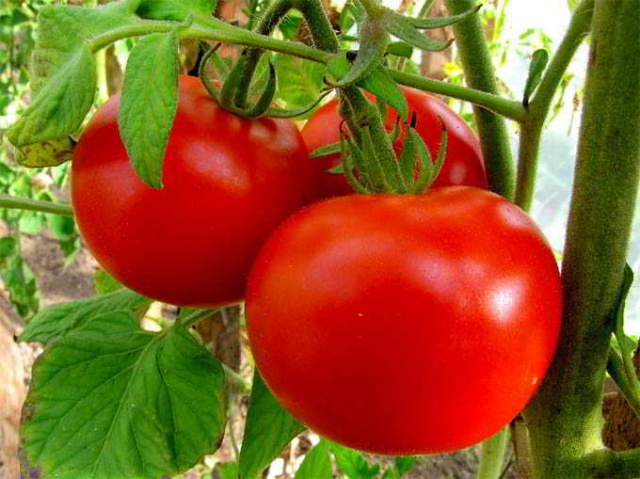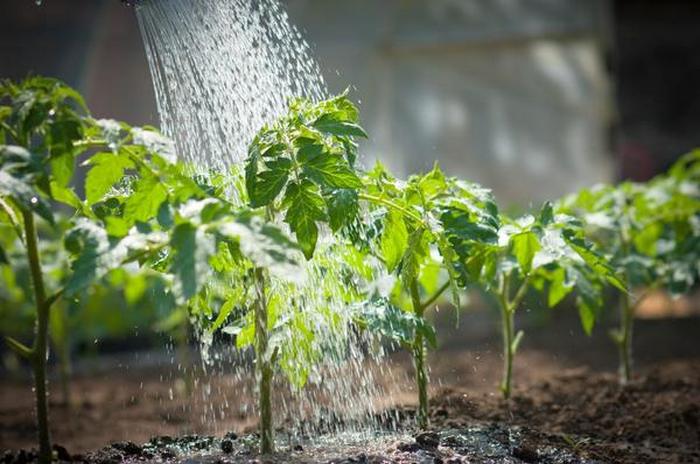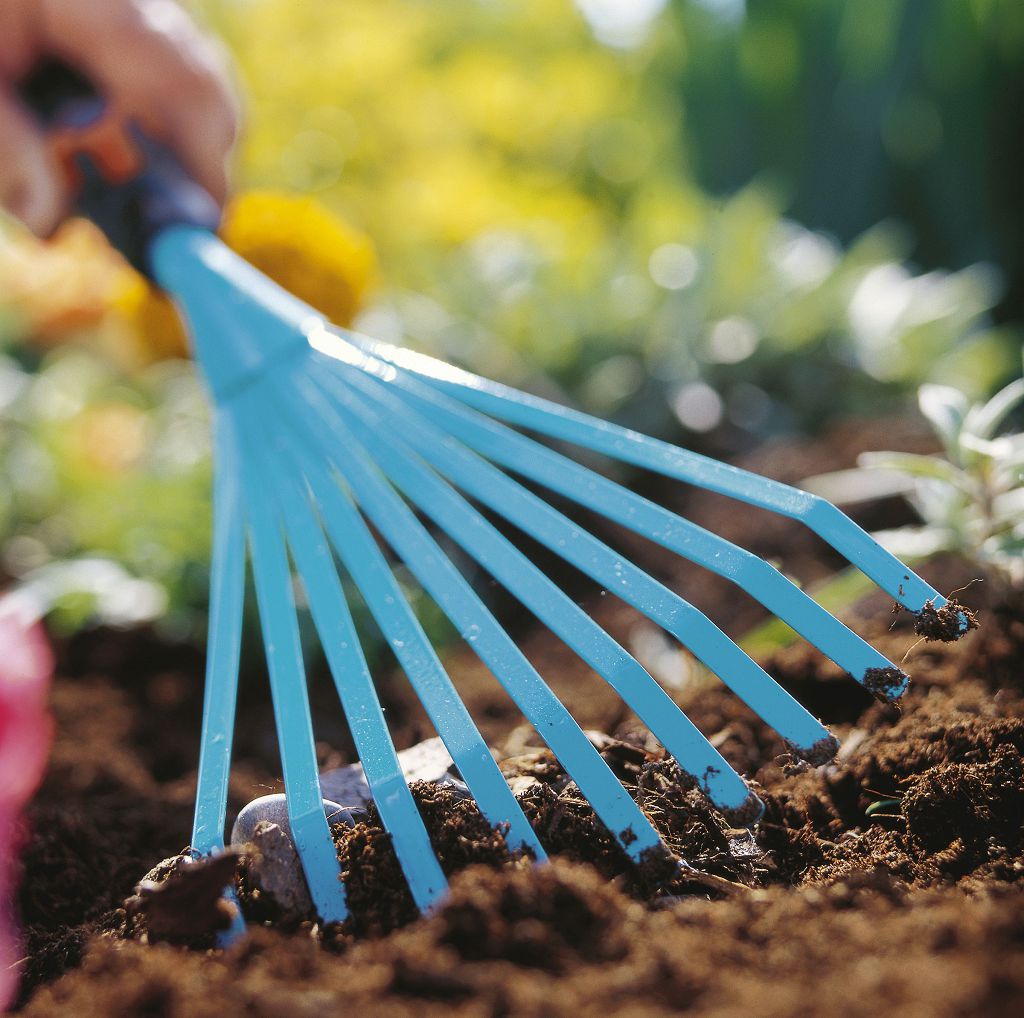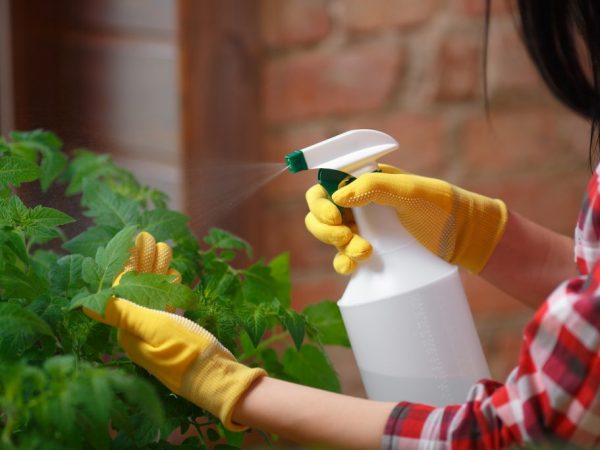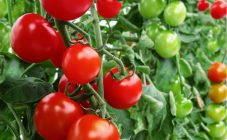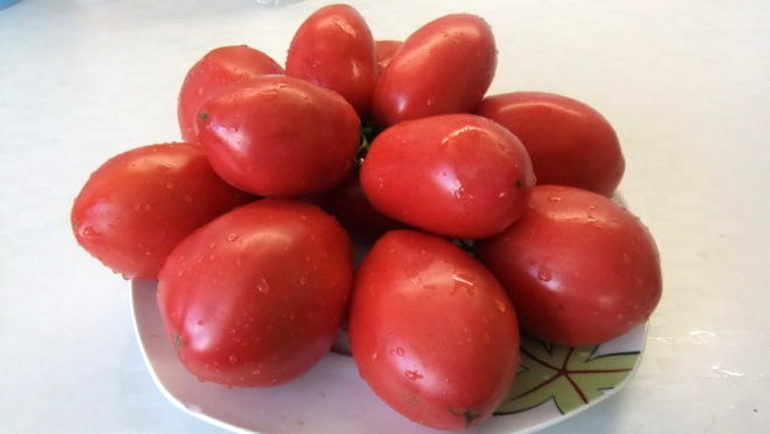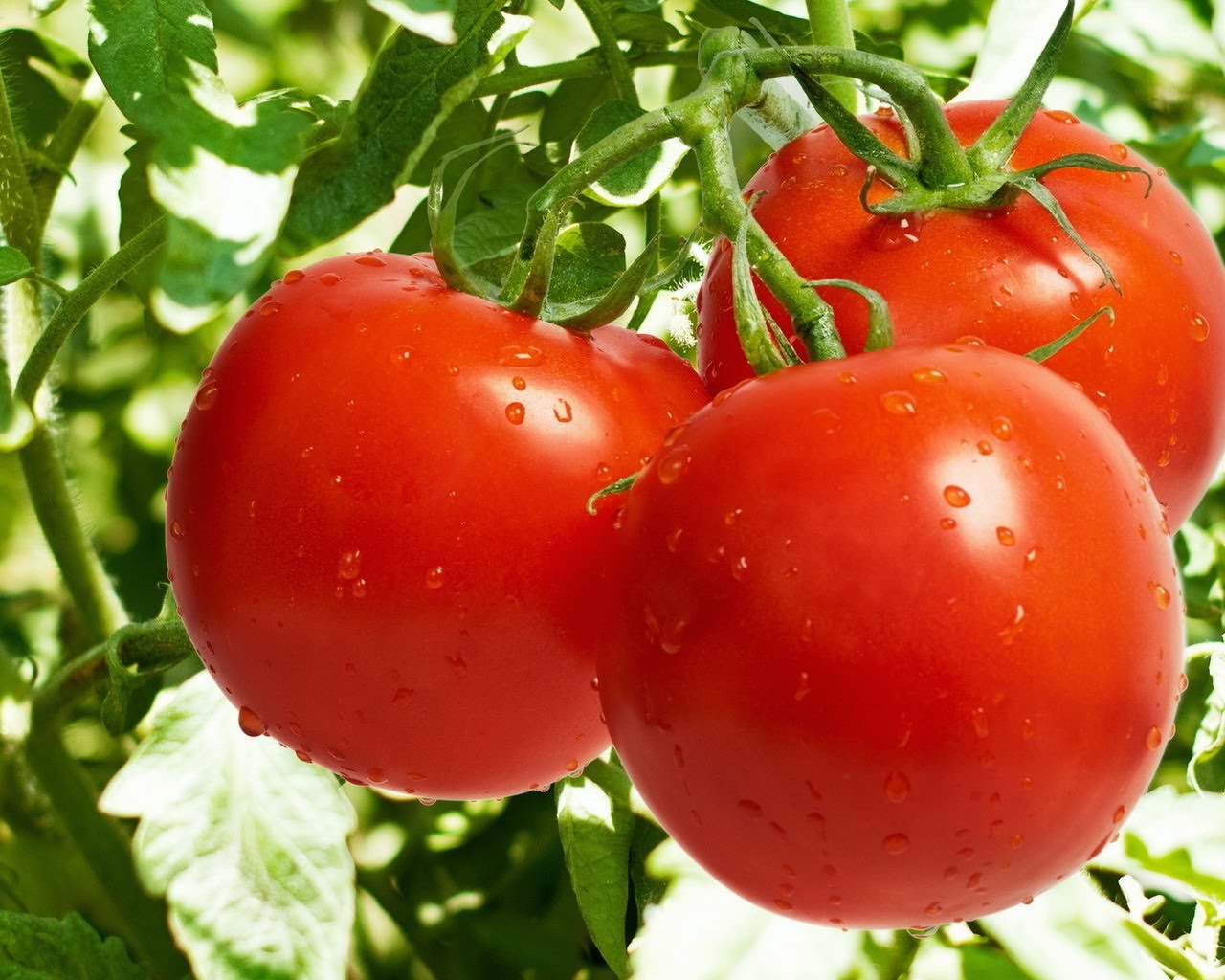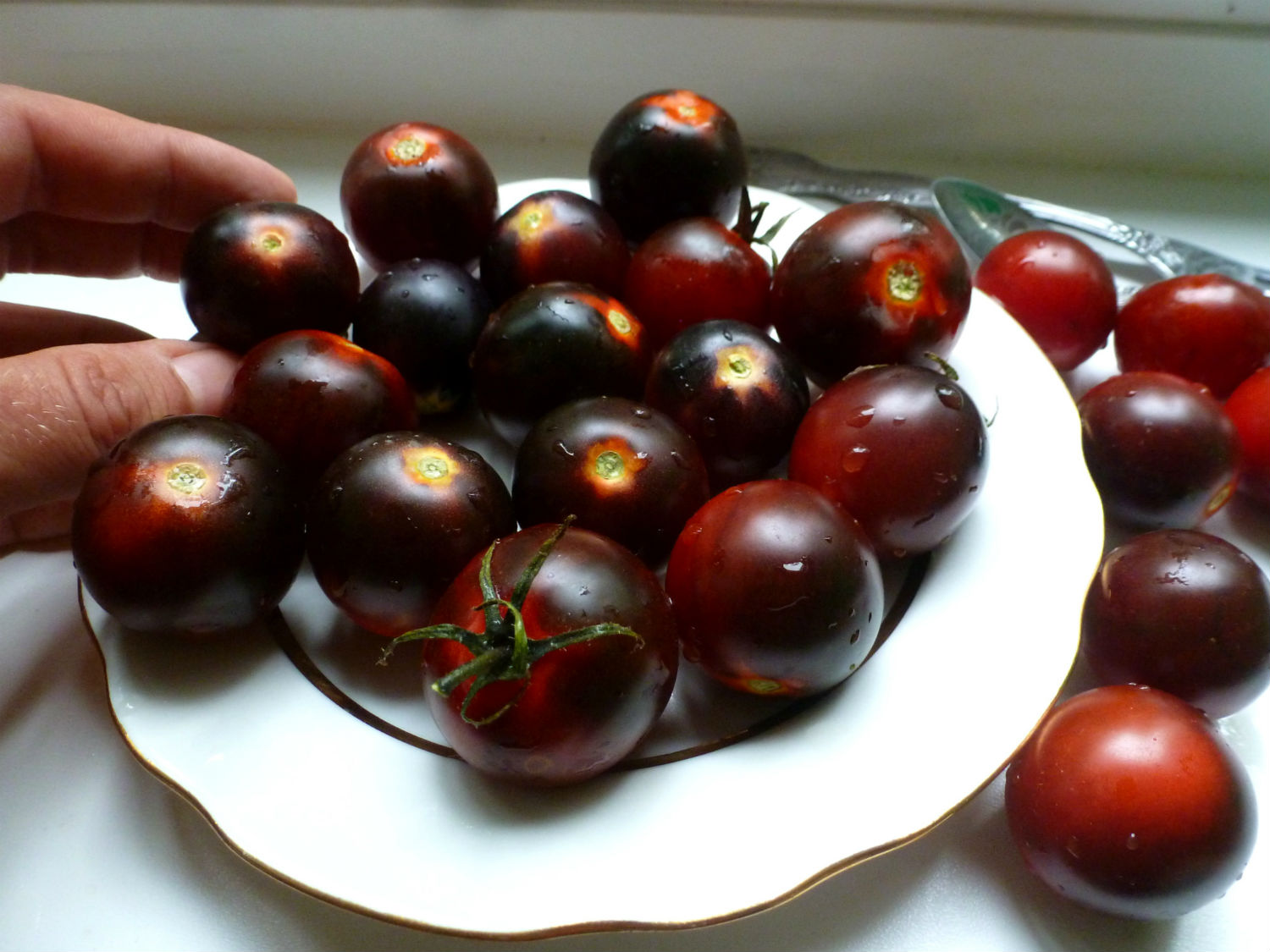Content:
South America is considered the birthplace of tomatoes. Even at the present time, wild ancestors of modern cultures are found on the territory of this continent. They were introduced to European countries 500 years ago as ornamental plants. In Russia, they first appeared in the Crimea, from where they were distributed throughout the territory of our country.
Tomato Michurinsky characteristics and description of the variety
Tomatoes belong to annual (less often perennial) herbaceous plants of the Solanaceae family. Located mainly in the upper layers of the soil, the taproot system is highly ramified.
Adventitious roots are formed on any part of the stem with sufficient nutrition and hilling it with moist soil. The stem is covered with fine hairs, erect. Plant of determinant structure. The growth of the central apex is limited by the flower race, which appears above the 6-7 leaves. Further growth of the plant occurs through the development of the strongest lower stepson.
After the formation of 1-6 leaves, the growth of a new shoot ends with the laying of a flower brush. The end of the growing season usually ends with the first autumn frost. The main stem can be up to 70 cm high. The bush is short, compact with 1-2 main stems. You can collect 9 kg of tomatoes from a bush per unit area. Corrugated leaves of medium size potato type with short petioles are arranged alternately, consisting of closely spaced lobes and lobules. Small nondescript yellow flowers are collected in a brush. They have both male and female organs, so the tomato is an optional self-pollinator.
Michurinets tomatoes are characterized by amicable early fruiting. The period from germination to active ripening of tomatoes is 90-98 days. The fruits are juicy, multi-celled, very fleshy, flat-rounded, with a smooth surface.
The color of a ripe tomato can be either red or pink. Weight - 80-100 grams, have excellent taste. They are used both for fresh consumption and for canning and salting. When buying tomatoes, many prefer this particular variety, because the Michurinsky variety tomatoes are well transported and are of high and commercial quality.
The ripe fruits of the plant contain vitamins of groups B, C, P, K, potassium, magnesium, chlorine, phosphorus, calcium, proteins, organic acids, and fiber. The sweetness comes from naturally occurring sugars. Consumption of fresh tomato juice dissolves gallstones, improves digestion, heart function, loss of visual acuity, development of cataracts, and overweight are also indications. Contraindications are individual intolerance and allergies.
Agricultural technology of cultivation
Sowing
Sowing seeds in a warm greenhouse is consistent with the peculiarities of local climatic conditions. This usually occurs in late winter or early spring. The seeds must first be poured onto a damp cloth and left like that for several days, maintaining a certain level of moisture until the sprout hatches. Then the seeds are sown in greenhouse soil and covered with a small layer of soil. At the first time of seedling growth in the greenhouse, it is necessary to protect them from weeds and air the greenhouse in time.3-4 weeks after sowing, a second pair of toothed leaves is formed on the seedlings, at this time it is worth making the first pick of the plants in the same warm greenhouse, only more rarely and with a large layer of soil. During this period, airing is necessary not only to avoid the formation of dampness and mold, but also to harden the plants.
Approximately a month after the first dive, when the plants begin to strongly press against each other, it is worth making their second dive. For this, plants are transplanted more freely. Greenhouse frames are trying to cover less and less often, accustoming plants to the outside air. In cases where there is no danger of frost, plants can be transferred to the ground. To get earlier fruits, sowing should be done a few weeks earlier and before planting in the ground, make not two, but three picks. Seedlings are planted in pots, which are kept in open greenhouse boxes and covered with matting only at night and when the temperature drops. Plants are transplanted directly into the soil, without violating the integrity of the root ball of the earth, into specially prepared holes. The planting density is 7-9 bushes per 1 m². The plants are then watered immediately. Watering is done daily until the plants take over.
The soil
Plants are less demanding on the composition of the soil than other types of vegetable crops. The most favorable for planting is well-irrigated sandy loam or light loamy soil with a high content of minerals and humus. It grows favorably on the soil on which cabbage, cucumbers, legumes, onions, carrots grew and were well fertilized. It does not tolerate fresh fertilizers, being exposed to potato disease.
During the growing season, the need for nutrients varies. In the initial period of growth, seedlings are very sensitive to a lack of phosphorus in the soil, which subsequently goes to the formation of fruits. Nitrogen is required during the period of active growth of the vegetative mass. Its overabundance entails excessive growth of leaves and stepchildren to the detriment of fruiting. Potassium is required for the formation of stems and fruits. Calcium stimulates the growth of roots and stems.
Watering
For the formation of a strong root system, sufficient aboveground biomass, and a good harvest, it is necessary to maintain a certain soil moisture. As a rule, it is 70-80% of the soil moisture capacity. The most critical moments are the first period after the transfer of the plant to the open ground and at the time of filling and ripening of fruits. Michurinsky tomatoes prefer irrigation to watering from a watering can. Watering from a watering can only be done in extreme cases during a particularly dry period, no more than 2-3 times per summer. After that, the soil near the roots and in the aisles must be loosened so that the roots can actively work.
Insufficient watering does not allow the root system to sufficiently absorb the necessary minerals. As a result, the growth processes slow down, the leaves lose their elasticity, flowers and ovaries begin to crumble, the filling of fruits slows down, which negatively affects the yield. Excessive stagnation of water in the soil makes plants less resistant to disease.
Care features
To increase the yield of Michurinets tomatoes, some gardeners practice foliage cropping. This technique should not be abused, especially if the plants do not grow in the open air, but in greenhouse conditions. Foliage participates in the process of photosynthesis, saturates the fruits with nutrients. During the period of active fruiting, it is necessary to cut off only diseased and yellow leaves. After the fruits on the first lower brush are poured, and their sizes reach the characteristic for this variety, the lower leaves can be removed. You can remove no more than 2-3 leaves from one bush per week. To maintain high yields, it is also necessary to remove unnecessary stepchildren in a timely manner.Otherwise, the fruits will be much smaller in size and, due to increased shading, are more susceptible to late blight. As the bush grows, the stems are tied to a trellis or other support.
If the weather is cloudy during ovary and flowering, then the fruits are poorly tied. This is because the pollen becomes viscous and unable to pollinate. In this case, tomatoes are sprayed with a weak solution of boric acid at the rate of 2 g per 10 liters of water. If the weather does not improve, then you can repeat the spraying after 2-3 days.
Diseases and pests
As a rule, Michurin tomatoes are susceptible to diseases caused by a lack or excess of nitrogen, phosphorus, potassium, or viral or fungal infections.
The Colorado potato beetle, bear, potato aphid and greenhouse whitefly can cause great damage to the crop.
Advantages and disadvantages of the variety
Among the main advantages of the Michurinsky pink tomato variety, experienced summer residents note the possibility of growing both in the open field and in closed greenhouses and greenhouses, high yield and early maturity. These are very important factors in unpredictable climatic conditions. Due to early ripening, fruits are less susceptible to late blight and other diseases. Their universal purpose allows them to be grown both for fresh consumption and for home canning.
Due to early active fruiting, excellent taste and universal purpose, Michurinets pink tomatoes are the first to appear on the shelves of Moscow, the Central Region and the Volga region. High transportability allows you to buy them in the remote northern regions.
